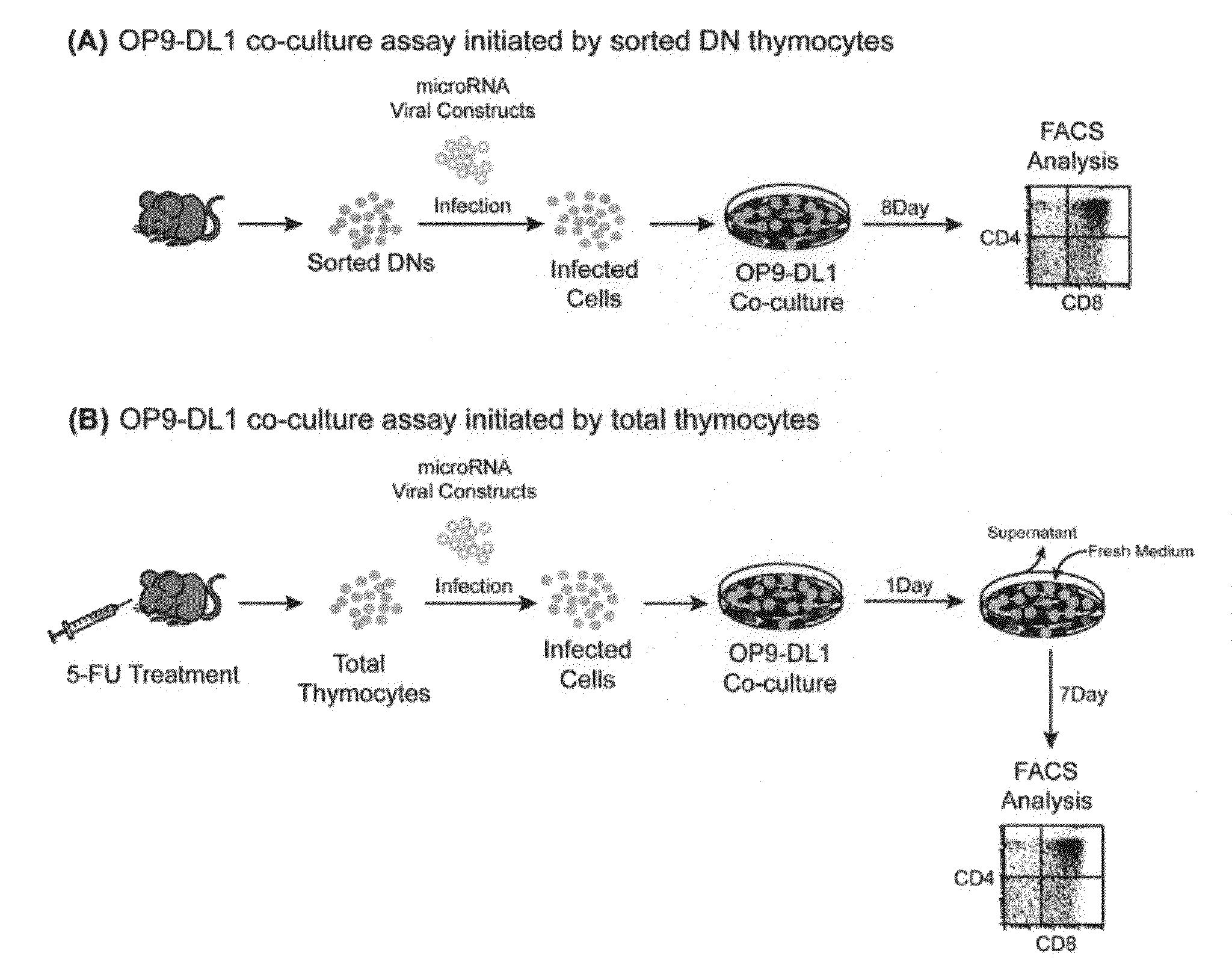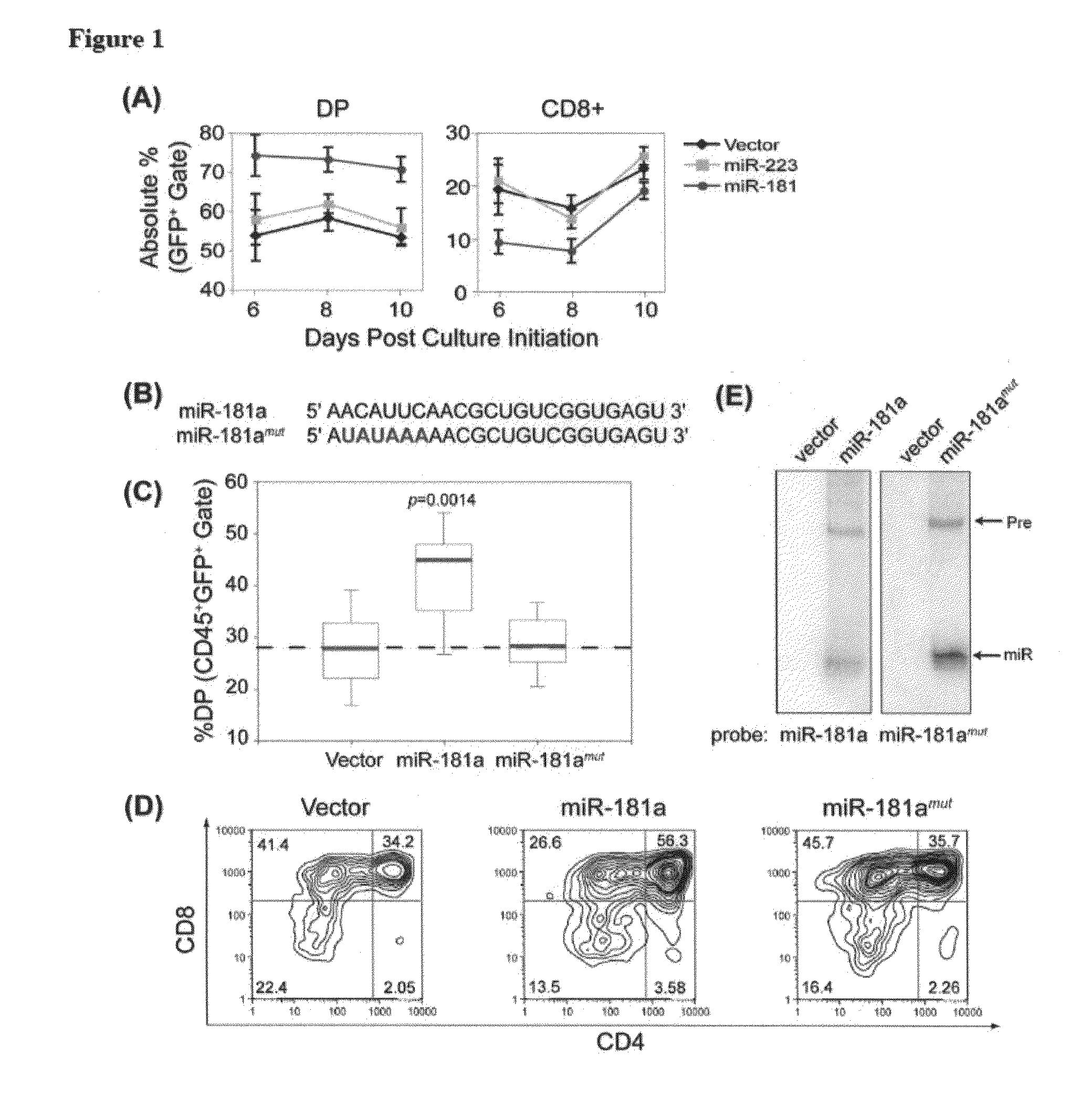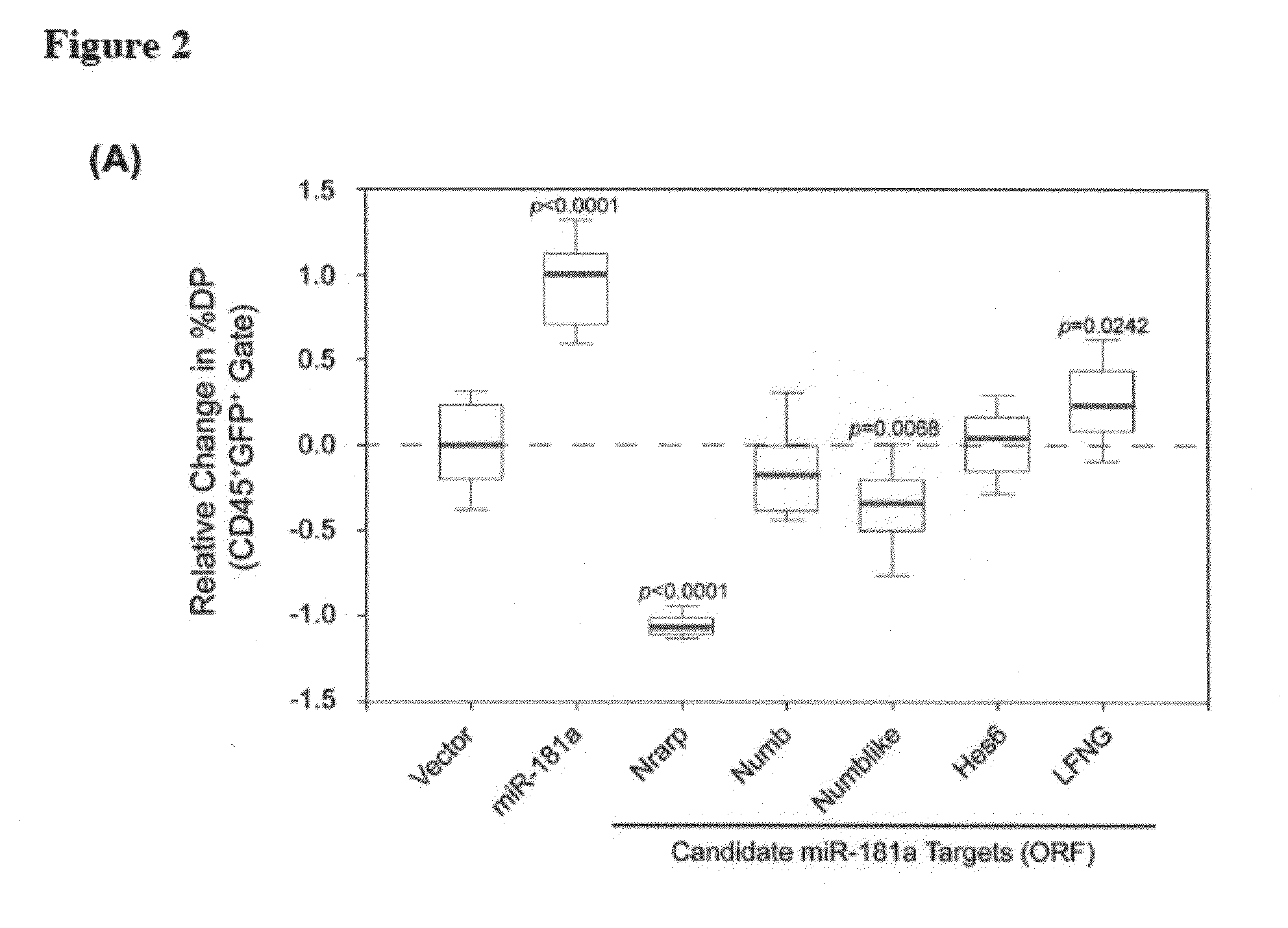Role of miRNA in T cell leukemia
a technology of mirna and t cell leukemia, which is applied in the field of mirna in t cell leukemia, can solve the problems of rapid death and no known effective treatment for leukemia
- Summary
- Abstract
- Description
- Claims
- Application Information
AI Technical Summary
Benefits of technology
Problems solved by technology
Method used
Image
Examples
example 1
[0145]The high prevalence of activating mutations in the Notch1 gene among T-ALL patients has sparked much interest to inhibit Notch signaling as a therapeutic modality. However, other signaling pathways, such as pre-TCR signaling, are required for the full penetrance of T-ALL. Given the ability of miR-181a to support active signaling between Notch and pre-TCR pathways by coordinately dampening negative regulators of these pathways, miR-181a represents an ideal therapeutic target for T-ALL. An established mouse model for T-ALL is used to address the importance of miR-181a in disease etiology and demonstrate down-modulation of miR-181a levels as a therapeutic option for T-ALL.
[0146]It has been demonstrated that by rendering bone marrow cells Notch ligand-independent through the constitutive expression of the intracellular domain of Notch (ICN), these cells can induce T cell leukemia when adoptively transferred to a lethally irradiated recipient. Within two weeks following bone marrow...
example 2
[0149]MiR-181a potentiates early αβ T cell development Among many known hematopoietic miRNAs, miR-181a is preferentially expressed in the B cell but not T cell lineages in the mouse bone marrow. Ectopic expression of miR-181a in hematopoietic stem / progenitor cells results in a marked increase in B cell differentiation, while accompanied by a decrease in the percentage of T lymphocytes in the peripheral blood of transplanted mice. Interestingly, miR-181a is also strongly expressed in the mouse thymus, which consists mainly of T cells, suggesting that miR-181a may play some role in the development and function of T cells. Here we show that miR-181a, a member of an abundant class of ˜22 nucleotide endogenous small regulatory RNAs, can quantitatively modulate T cell development.
[0150]T cell differentiation in the thymus can be divided into discrete stages characterized by the expression of CD4 and CD8 coreceptors. CD4 and CD8 double-negative (DN) cells, which are the early T cell progen...
example 3
[0158]Nrarp is a candidate target for miR-181a. Using a bioinformatic algorithm to predict potential miRNA pairing sites on target genes, we searched for putative binding sites present on known regulators of the Notch signaling pathway, and found that Nrarp, Numb, Numb-like, Hes6, and Lunatic Fringe (LFNG) each contain multiple miR-181a binding sites in the 3′ UTR region (FIG. 2B, FIG. 13A-D).
[0159]To assess the role of these candidate genes in T cell development, we transduced thymic progenitors with retroviral constructs expressing only the coding region of these genes in the OP9-DL1 co-culture assay. We discovered that ectopic expression of only Nrarp-ORF was able to profoundly block the development of DP thymocytes when compared to vector control (FIG. 2A; 0.0 vs. 1.1 media normalized DP value, P<0.0001).
[0160]We proceeded to validate the predicted miR-181a binding sites by employing a T cell leukemia cell line, known as T6E. Stable expression of full-length cDNA (FL) of Nrarp w...
PUM
| Property | Measurement | Unit |
|---|---|---|
| weight | aaaaa | aaaaa |
| weight | aaaaa | aaaaa |
| temperature | aaaaa | aaaaa |
Abstract
Description
Claims
Application Information
 Login to View More
Login to View More - R&D
- Intellectual Property
- Life Sciences
- Materials
- Tech Scout
- Unparalleled Data Quality
- Higher Quality Content
- 60% Fewer Hallucinations
Browse by: Latest US Patents, China's latest patents, Technical Efficacy Thesaurus, Application Domain, Technology Topic, Popular Technical Reports.
© 2025 PatSnap. All rights reserved.Legal|Privacy policy|Modern Slavery Act Transparency Statement|Sitemap|About US| Contact US: help@patsnap.com



